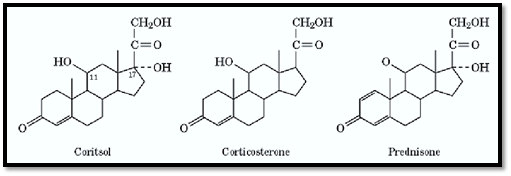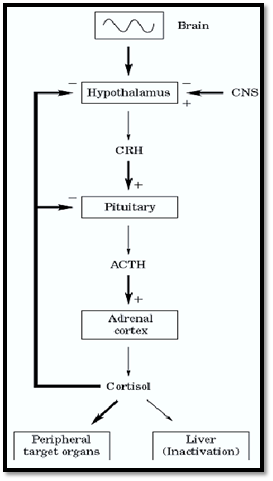

النبات

مواضيع عامة في علم النبات

الجذور - السيقان - الأوراق

النباتات الوعائية واللاوعائية

البذور (مغطاة البذور - عاريات البذور)

الطحالب

النباتات الطبية


الحيوان

مواضيع عامة في علم الحيوان

علم التشريح

التنوع الإحيائي

البايلوجيا الخلوية


الأحياء المجهرية

البكتيريا

الفطريات

الطفيليات

الفايروسات


علم الأمراض

الاورام

الامراض الوراثية

الامراض المناعية

الامراض المدارية

اضطرابات الدورة الدموية

مواضيع عامة في علم الامراض

الحشرات


التقانة الإحيائية

مواضيع عامة في التقانة الإحيائية


التقنية الحيوية المكروبية

التقنية الحيوية والميكروبات

الفعاليات الحيوية

وراثة الاحياء المجهرية

تصنيف الاحياء المجهرية

الاحياء المجهرية في الطبيعة

أيض الاجهاد

التقنية الحيوية والبيئة

التقنية الحيوية والطب

التقنية الحيوية والزراعة

التقنية الحيوية والصناعة

التقنية الحيوية والطاقة

البحار والطحالب الصغيرة

عزل البروتين

هندسة الجينات


التقنية الحياتية النانوية

مفاهيم التقنية الحيوية النانوية

التراكيب النانوية والمجاهر المستخدمة في رؤيتها

تصنيع وتخليق المواد النانوية

تطبيقات التقنية النانوية والحيوية النانوية

الرقائق والمتحسسات الحيوية

المصفوفات المجهرية وحاسوب الدنا

اللقاحات

البيئة والتلوث


علم الأجنة

اعضاء التكاثر وتشكل الاعراس

الاخصاب

التشطر

العصيبة وتشكل الجسيدات

تشكل اللواحق الجنينية

تكون المعيدة وظهور الطبقات الجنينية

مقدمة لعلم الاجنة


الأحياء الجزيئي

مواضيع عامة في الاحياء الجزيئي


علم وظائف الأعضاء


الغدد

مواضيع عامة في الغدد

الغدد الصم و هرموناتها

الجسم تحت السريري

الغدة النخامية

الغدة الكظرية

الغدة التناسلية

الغدة الدرقية والجار الدرقية

الغدة البنكرياسية

الغدة الصنوبرية

مواضيع عامة في علم وظائف الاعضاء

الخلية الحيوانية

الجهاز العصبي

أعضاء الحس

الجهاز العضلي

السوائل الجسمية

الجهاز الدوري والليمف

الجهاز التنفسي

الجهاز الهضمي

الجهاز البولي


المضادات الميكروبية

مواضيع عامة في المضادات الميكروبية

مضادات البكتيريا

مضادات الفطريات

مضادات الطفيليات

مضادات الفايروسات

علم الخلية

الوراثة

الأحياء العامة

المناعة

التحليلات المرضية

الكيمياء الحيوية

مواضيع متنوعة أخرى

الانزيمات
Glucocorticoids
المؤلف:
S. J. Pilkis and D. K. Granner
المصدر:
Annu. Rev. Physiol 54, 885–909
الجزء والصفحة:
15-5-2016
4208
Glucocorticoids
Glucocorticoids (or glucocorticosteroids) are natural steroid hormones, or synthetic analogues, that regulate metabolic, developmental and immunological processes. The major natural glucocorticoids are cortisol (11 b,17,21, trihydroxy-4-pregnene-3,20-dione) (in humans) and corticosterone (11 b,21,d,hydroxypregn-4-ene-3,20-dione) (in rodents) (Fig. 1). Semisynthetic derivatives with greater hormonal activity than that of the natural steroids are dexamethasone, prednisone, and triamcinolone (Fig. 1). The synthesis of glucocorticoids in the zona fasciculata of the adrenal cortex and their release in the blood circulation is regulated by adrenocorticotropic hormone (ACTH), which is produced in the anterior lobe of the hypophysis, in response to stimuli coming either from the neuroendocrine cells of the paraventricular nuclei of the hypothalamus (corticotropin releasing hormone) or from the periphery (blood cortisol concentration). High blood cortisol levels reduce, by feedback inhibition, the production of both corticotropin-releasing hormone and ACTH. This regulatory circuit is called the hypothalamus–pituitary–adrenal axis (see Fig. 2). Glucocorticoid secretion is enhanced during stress conditions, such as anxiety, hunger, and trauma. Most effects of glucocorticoids are mediated by the glucocorticoid receptors, which belong to the superfamily of nuclear receptors. There are two forms of glucocorticoid receptor, A and B, differing in their C-terminal regions. Upon binding the hormone, the receptor dimerizes, binds to glucocorticoid response elements (the consensus sequence is GGACAnnnTGTTCT), which are receptor-activated enhancers, and modulate gene transcription.

Figure 1. Structure of glucocorticoids.

Figure 2. Regulation of cortisol production by the hypothalamus–pituitary–adrenal axis.
The glucocorticoids regulate the metabolism of sugars, lipids, and proteins. They stimulate glucose output from the liver, inhibit glucose utilization by tissues, and mobilize fatty acids from adipose tissue. The hormones act on muscle, bone, and lymph organs, inhibiting protein biosynthesis and enhancing protein degradation. Some of the amino acids released in the circulation are used for gluconeogenesis, primarily in the liver but also in kidneys. The action of glucocorticoids on gluconeogenesis represents one of the most exploited and rewarding systems for delineating the molecular mechanisms of steroid hormone action (1, 2). In gluconeogenesis, amino acids are metabolized to two-carbon precursors to be used for glucose synthesis. The biosynthesis of enzymes like tyrosine aminotransferase, alanine aminotransferase, tryptophan dioxygenase, pyruvate carboxylase, and phosphoenolpyruvate-carboxykinase, which catalyze 2C-precursor production or utilization for glucose synthesis, are induced by glucocorticoids. All steps—from binding of the glucocorticoid ligand to its receptor, to increased transcription of the genes, to translation of the messenger RNA to the respective proteins—have been studied in detail and have supported the steroid hormone gene-activation hypothesis (3). The inhibition of protein synthesis by glucocorticoids in the lymphatic system results in decreased antibody production (immunosuppression) and increased susceptibility to infection. The suppressive effects of glucocorticoids on the inflammatory response have led to new insights and a novel mechanism of action of glucocorticoids. Namely, the hormones block binding of the transcription factor NF-k B on promoters having NF-kB binding sites (eg, the promoter of the interleukin gene) by direct interaction between the receptor and the transcription factor, thereby inhibiting expression of the respective (eg, interleukin) gene (4).
The role of glucocorticoids in embryonic development has been investigated in transgenic mice deficient in the glucocorticoid receptor (5). These mice die within a few hours of birth because of respiratory failure due to severely atelectic lungs, probably resulting from lowered production of surfactants and from a deficiency of a glucocorticoid-inducible sodium pump. The livers of newborns have reduced capacity to activate genes for key gluconeogenic enzymes, whereas the adrenals lack a central medulla and cannot synthesize adrenaline. The hypothalamus–pituitary–adrenal axis is impaired, resulting in increased expression of corticotropin-releasing hormone and in hypertrophy of the adrenal cortex, signifying that the hypothalamus–pituitary–adrenal axis is established during fetal development, and underlining the central role of glucocorticoids in this process.
References
1. G. Schutz (1988) Biol. Chem. Hoppe Seyler 369, 77–89.
2. S. J. Pilkis and D. K. Granner (1992) Annu. Rev. Physiol 54, 885–909.
3. P. Karlson (1963) Perspect. Biol. Med. 6, 203–214.
4. R. Scheinman et al (1995) Mol. Cell Biol. 15, 943–953.
5. T. J. Cole et al. (1995) Genes Dev., 9, 1608–1621.
 الاكثر قراءة في مواضيع عامة في الاحياء الجزيئي
الاكثر قراءة في مواضيع عامة في الاحياء الجزيئي
 اخر الاخبار
اخر الاخبار
اخبار العتبة العباسية المقدسة

الآخبار الصحية















 قسم الشؤون الفكرية يصدر كتاباً يوثق تاريخ السدانة في العتبة العباسية المقدسة
قسم الشؤون الفكرية يصدر كتاباً يوثق تاريخ السدانة في العتبة العباسية المقدسة "المهمة".. إصدار قصصي يوثّق القصص الفائزة في مسابقة فتوى الدفاع المقدسة للقصة القصيرة
"المهمة".. إصدار قصصي يوثّق القصص الفائزة في مسابقة فتوى الدفاع المقدسة للقصة القصيرة (نوافذ).. إصدار أدبي يوثق القصص الفائزة في مسابقة الإمام العسكري (عليه السلام)
(نوافذ).. إصدار أدبي يوثق القصص الفائزة في مسابقة الإمام العسكري (عليه السلام)


















